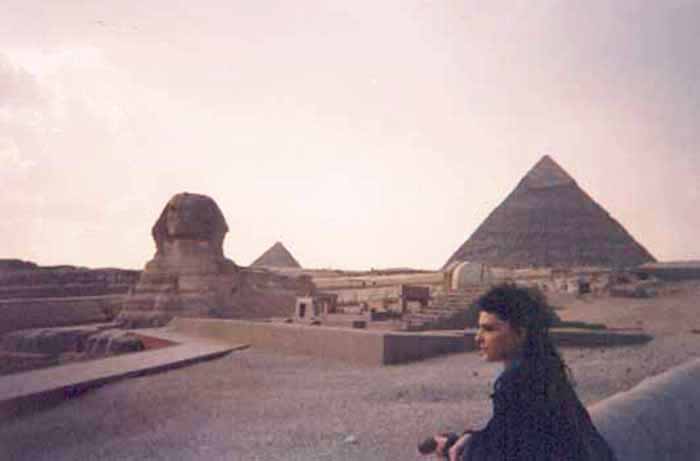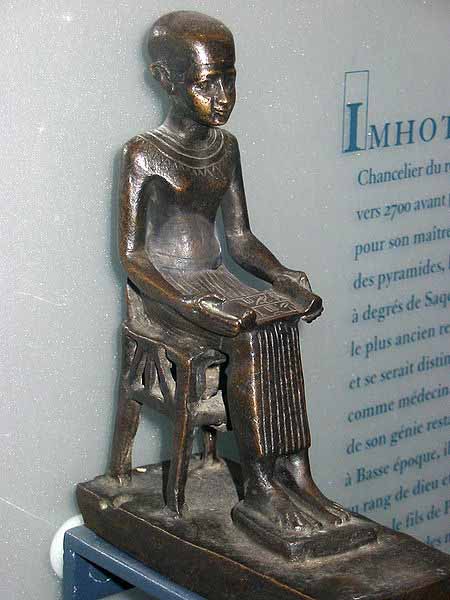

Old Kingdom is the name given to the period in the 3rd millennium BC when Egypt attained its first continuous peak of civilization in complexity and achievement Ð the first of three so-called "Kingdom" periods, which mark the high points of civilization in the lower Nile Valley (the others being Middle Kingdom and the New Kingdom).
The term itself was coined by nineteenth century historians and the distinction between the Old Kingdom and the Early Dynastic Period is not one which would have been recognized by Ancient Egyptians. Not only was the last king of the Early Dynastic Period related to the first two kings of the Old Kingdom, but the 'capital', the royal residence, remained at Ineb-Hedg, the Ancient Egyptian name for Memphis. The basic justification for a separation between the two periods is the revolutionary change in architecture accompanied by the effects on Egyptian society and economy of large-scale building projects.
The Old Kingdom is most commonly regarded as the period from the Third Dynasty through to the Sixth Dynasty (2686 BC - 2181 BC). Many Egyptologists also include the Memphite Seventh and Eighth Dynasties in the Old Kingdom as a continuation of the administration centralized at Memphis. While the Old Kingdom was a period of internal security and prosperity, it was followed by a period of disunity and relative cultural decline referred to by Egyptologists as the First Intermediate Period.
During the Old Kingdom, the king of Egypt (not called the Pharaoh until the New Kingdom) became a living god, who ruled absolutely and could demand the services and wealth of his subjects. The numerous references to the Old Kingdom kings as pharaohs in this article stems from the ubiquitous use of the term "pharaoh" to describe any and all Ancient Egyptian Kings.
Under King Djoser, the first king of the Third Dynasty of the Old Kingdom, the royal capital of Egypt was moved to Memphis, where Djoser established his court. A new era of building was initiated at Saqqara under his reign. King Djoser's architect, Imhotep is credited with the development of building with stone and with the conception of the new architectural form - the Step Pyramid. The Old Kingdom is perhaps best known for the large number of pyramids constructed at this time as pharaonic burial places. For this reason, the Old Kingdom is frequently referred to as the Age of the Pyramids.

Egypt's Old Kingdom (Dynasties 3-6, ca. 2649-2150 BC) was one of the most dynamic periods in the development of Egyptian art. During this period, artists learned to express their culture's worldview, creating for the first time images and forms that endured for generations. Architects and masons mastered the techniques necessary to build monumental structures in stone.
Sculptors created the earliest portraits of individuals and the first lifesize statues in wood, copper, and stone. They perfected the art of carving intricate relief decoration and, through keen observation of the natural world, produced detailed images of animals, plants, and even landscapes, recording the essential elements of their world for eternity in scenes painted and carved on the walls of temples and tombs.
These images and structures had two principal functions: to ensure an ordered existence and to defeat death by preserving life into the next world. To these ends, over a period of time, Egyptian artists adopted a limited repertoire of standard types and established a formal artistic canon that would define Egyptian art for more than 3,000 years, while remaining flexible enough to allow for subtle variation and innovation. Although much of their artistic effort was centered on preserving life after death, Egyptians also surrounded themselves with objects to enhance their lives in this world, producing elegant jewelry, finely carved and inlaid furniture, and cosmetic vessels and implements made from a wide range of materials.